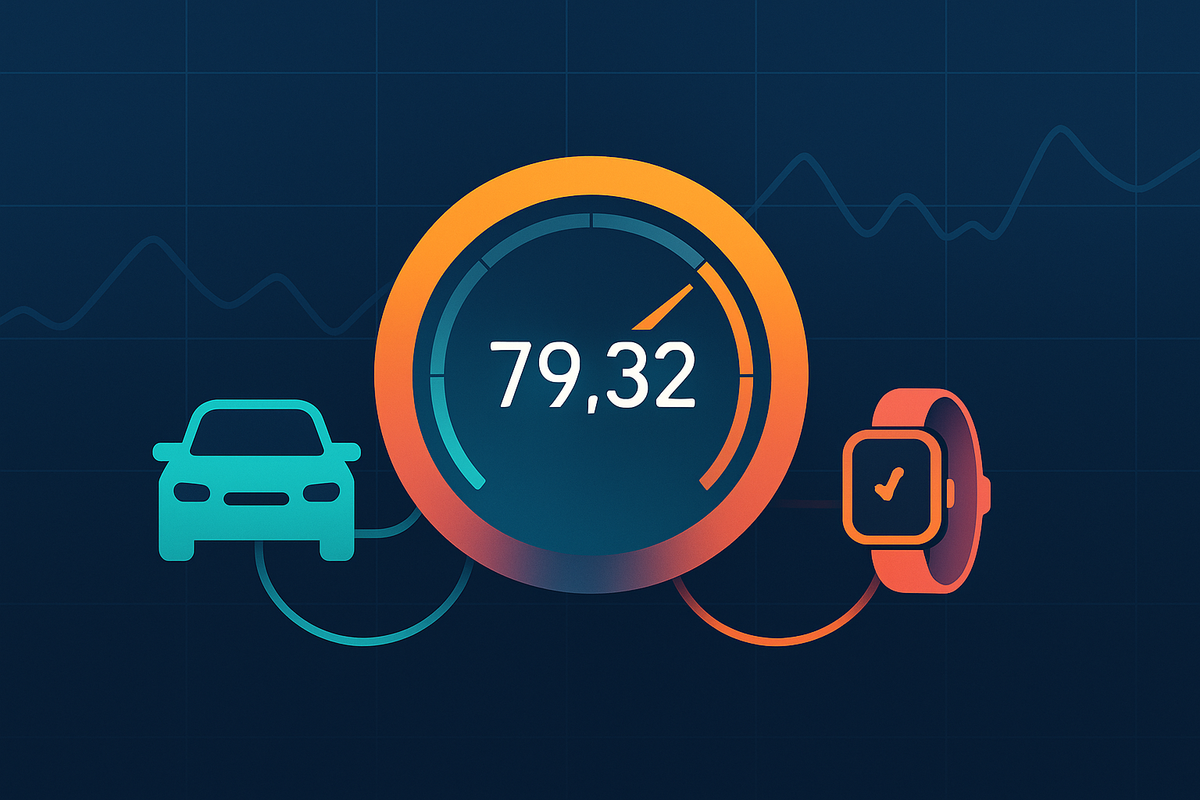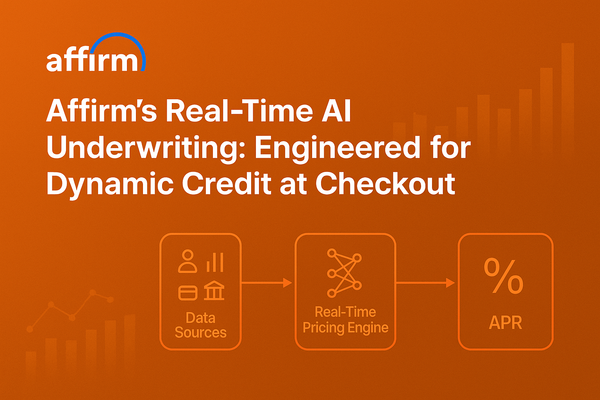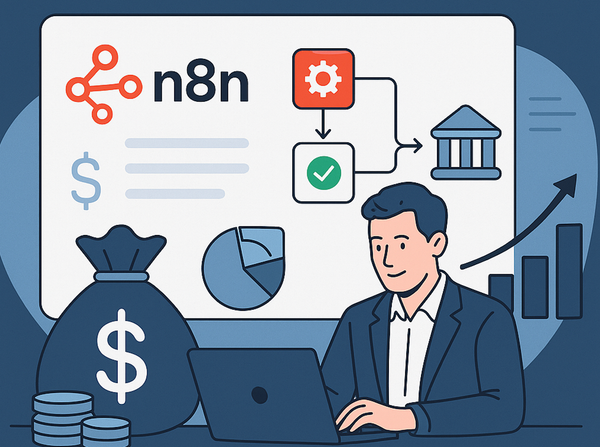Dynamic Pricing in Insurance: How AI Delivers Real-Time, Personalized Premiums

Why dynamic pricing—why now?
Insurance pricing is shifting from “file it and forget it” to continuously informed rates. The catalyst: connected data streams, modern machine learning, and clearer governance. For product leaders, this unlocks hyper-personalization without abandoning discipline: pricing that reflects how people actually drive, live, and protect assets (Insurance Thought Leadership). Consumers are open to it, too: in a Capco survey, 89% of U.S. customers said they’ll share more personal data for lower premiums and better-tailored services (PropertyCasualty360).
What “real-time” looks like in practice
Auto: pay-as-you-go and pay-how-you-drive
- Per-mile billing (monthly): UK insurer By Miles charges a small fixed fee plus a per-mile rate, settling at the end of each month via an OBD device (“Miles Tracker”) (By Miles Help).
- Daily + per-mile: Allstate’s Milewise blends a daily base rate with a per-mile rate, updated from telematics (Allstate Milewise).
These models bring the pricing clock much closer to behavior—often daily billing components and monthly true-ups—without waiting a full policy term.
Life & health: wearables-linked incentives
John Hancock’s Vitality programs tie rewards and potential premium savings to activity levels tracked via wearables; Vitality PLUS premiums may vary by policy terms and level of participation (John Hancock). Several product variants adjust annually based on the insured’s achieved Vitality status (John Hancock; supporting materials show annual premium adjustments tied to status tiers).
Catastrophes: recalibrating when history fails
Traditional ratemaking can struggle after major hurricanes when historical data underweights contemporary hazard. Today, catastrophe platforms provide rapid event-response loss estimates—e.g., real-time HWind footprints and modeled loss ranges—helping carriers update assumptions faster for pricing, underwriting, and capital allocation (Moody’s RMS; Insurance Thought Leadership).
Under the hood: how a dynamic pricing engine works
- Data pipeline: Stream telematics (accel/braking, cornering, phone use), mileage, environmental signals (weather, road type), plus verified customer/vehicle data. Land raw feeds into an auditable store.
- Feature store: Build real-time features (e.g., night-driving minutes, harsh events per 100 miles, exposure to severe weather); version and document lineage for every feature used in price decisions.
- Risk models: Mix GLMs/GBMs for base risk with contextual bandits or reinforcement learning (RL) for price response (conversion/retention) so you optimize both risk and revenue (arXiv: Insurance pricing via RL; Alan Turing Institute).
- Guardrails & governance: Constrain price movements; enforce fairness and explainability tests; maintain a policy of record with rationale for each factor (NAIC AI Model Bulletin).
- Decisioning: Choose from a menu (discounts, per-mile rate, behavior-based rewards). For regulated lines, bind dynamic elements to filed plans (e.g., monthly miles) and apply faster dynamics as discounts or credits to stay compliant.
- Monitoring: Drift detection, A/B holdouts, quarterly revalidation; auto-rollback on anomaly.
Proof points you can cite to your CFO
- Consumers say “yes” to data-for-savings: 89% of U.S. customers are willing to share more personal data for premium savings and tailored services (PC360).
- Usage-based works: Per-mile programs (By Miles, Milewise) and behavior-linked incentives (Vitality) already price closer to real risk (By Miles; Allstate; John Hancock).
- Faster catastrophe response: Event-response modeling gives near-real-time loss ranges after landfall so you can recalibrate assumptions sooner (Moody’s RMS).
- Adaptive AI reduces loss elsewhere in FinServ: Visa/Featurespace reported a 90% drop in phishing losses for Eika’s bank network after deploying adaptive AI—evidence that behavior-driven, real-time models can deliver step-change outcomes (Visa).
What about bias, explainability, and regulation?
Dynamic pricing must remain fair and explainable. Regulators have signaled clear expectations. The NAIC’s 2023 AI Model Bulletin requires a written AI program, data lineage controls, testing for bias, vendor accountability, and the ability to answer regulator inquiries about any AI-supported decision (NAIC Model Bulletin). Adoption is spreading—by March 2025, 24 U.S. jurisdictions had adopted it, many with little change (Quarles).
Colorado went first with line-specific rules: life insurers using external consumer data and algorithms must prove they aren’t unfairly discriminating and meet governance/testing requirements—timelines and scope are published and expanding to other lines (SB21-169; Faegre Drinker).
Architecture sketch (for PMs and engineers)
- Ingest & quality: Telemetry gateway → streaming broker (Kafka/Kinesis) → bronze/silver data lake.
- Feature store: Real-time aggregations; versioned definitions; PII minimization; monitoring.
- Model layer: Base GLM/GBM for loss cost + bandit/RL for price response; constrained optimization to respect filed factors and guardrails (arXiv).
- Governance: Model cards, fairness tests, SHAP/monotonicity checks, challenger-vs-champion framework (shadow pricing before go-live), and vendor diligence mapped to NAIC bullets.
- Decisioning & delivery: Low-latency API (p99 < 100ms) returning discounts, per-mile rates, or rewards; audit log with feature snapshot and explanation.
Go-to-market patterns that work
- Start where pricing can move faster: UBI (miles/time-of-day), behavior-based discounts, and parametric add-ons. File plan changes while you pilot RL in shadow mode.
- Make rewards immediate: Push monthly or even weekly credits/discounts tied to safe behaviors (e.g., night-driving reduction) to reinforce habits.
- Explain like a human: “You saved $12 this month by reducing hard braking by 35%.” Provide clear reason codes and appeal paths.
- Close the loop: Use event-response and ex-post loss analyses after storms to update risk weights; keep a governance trail for every adjustment.
Bottom line
Dynamic pricing isn’t about squeezing customers—it’s about aligning price with actual risk in near real time. Do it right and you unlock better segmentation, faster post-event recalibration, and a customer experience that feels fair because it is fair. With robust governance and clear UX, this is an advantage your competitors can’t quickly copy.
References
- “Dynamic Pricing Gives Insurers a Competitive Edge,” Insurance Thought Leadership, Dec 9, 2024. Link.
- “Catastrophe Modeling and the LLM Revolution,” Insurance Thought Leadership, Jun 23, 2025. Link.
- “More Accurate Real-Time Hurricane Loss Estimates with HWind Forecasting Footprints,” Moody’s RMS, Oct 7, 2024. Link.
- Brittney Meredith-Miller, “Customers more willing to share personal data with insurers,” PropertyCasualty360, Jul 25, 2023. Link.
- “How does pay-by-mile work?” By Miles Help. Link.
- “Pay-Per-Mile Car Insurance | Milewise,” Allstate. Link.
- “John Hancock Vitality,” John Hancock (program and premium variation details). Link.
- “NAIC Model Bulletin: Use of Artificial Intelligence Systems by Insurers,” NAIC, adopted Dec 4, 2023. Link.
- “Nearly Half of States Have Now Adopted NAIC Model Bulletin…,” Quarles, Apr 2, 2025. Link.
- “SB21-169: Restrict Insurers’ Use of External Consumer Data…,” Colorado General Assembly, 2021. Link.
- “Colorado Division of Insurance Takes Next Steps to Expand AI-Related Obligations…,” Faegre Drinker, May 6, 2025. Link.
- Treetanthiploet et al., “Insurance pricing on price comparison websites via reinforcement learning,” arXiv, 2023. Link.
- “Reinforcement learning for insurance pricing,” The Alan Turing Institute (esure/Accenture collaboration). Link.
- “Visa boosts AI capabilities to further reduce fraud,” Visa Navigate, 2025 (Eika 90% phishing-loss reduction). Link.



